Chapter 18.32
COMMERCIAL DISTRICTS (CV, CC, CH)*
Sections:
18.32.030 Lot performance standards.
18.32.040 Commercial site design standards.
18.32.050 Espresso stands – Drive-through.
18.32.060 Commercial recreational facilities (enclosed and unenclosed) – Design standards.
*Prior ordinance history: Ords. 1167 and 1264.
18.32.010 Purposes.
(1) Convenience Commercial (CV).
(a) The intent of the convenience commercial district is to provide goods and services that cater to the frequent needs of residents in immediately surrounding neighborhoods. This district is designed to be compatible with adjacent residential environments and provide easy accessibility to adjacent neighborhoods. The successful integration of these commercial districts adjacent to neighborhoods serves to reduce vehicle miles traveled and contributes to a more viable neighborhood atmosphere.
(b) Convenience retail and service establishments are the only uses permitted in this district. Normally, the size of the site for a convenience commercial district does not exceed five acres, and typically does not contain more than five individual services or retail establishments. Floor area limitations are imposed to ensure such services and establishments remain small in scale and compatible with the residential environment. Businesses catering to highway traffic are inappropriate due to large areas of parking, heavy traffic volumes, and potential nuisance characteristics such as noise from loudspeakers and odors from painting. Uses that cater to a larger market area, such as major chain grocery stores, are too large in scale to be compatible with immediately adjacent neighborhoods.
(2) Community Commercial District (CC).
(a) The intent of this commercial district is to provide goods and services to a more regional rather than local market area.
(b) Generally, the mix of permitted uses is intended to encourage a pedestrian-friendly environment, one that does not promote extensive vehicle travel. For this reason, highway business uses are generally not permitted and industrial and storage operations that necessitate truck traffic are only permitted as conditional uses if they can peacefully coexist in a pedestrian environment.
(c) Development within this district is typically characterized by very large percentages of the lots occupied by buildings; few, if any, front, side and rear yards.
(3) Highway Commercial District (CH). The highway commercial district is intended to acknowledge the existing highway orientation of a significant stock of commercial development. The purpose of these commercial areas is primarily to serve the needs of highway travelers, conveniently. Uses include intensive commercial activities and establishments that rely on highway-oriented, passerby traffic. Characteristics of these sites include high visibility from highway traffic, large sites, and immediate highway access. This district is not normally suitable adjacent to residential neighborhoods, without substantial mitigation efforts. This district is designed to be the least restrictive of all the commercial districts and includes most every use permitted in the community commercial district. (Ord. 1849 § 1 (Exh. A), 2018; Ord. 1503 § 1, 2005; Ord. 1496 § 1, 2004; Ord. 1473 § 1, 2004; Ord. 1437 § 1, 2002; Ord. 1398 § 1 (Exh. A), 2000)
18.32.020 Uses.
Uses permitted, conditional and prohibited and their associated review procedures are listed in Table 18.32-1. If a use is not listed, it is understood to be prohibited. In addition, all commercial uses shall comply with the commercial design standards at WMC 18.32.040, Commercial site design standards.
|
USE |
CV |
CC |
CH |
|---|---|---|---|
|
A. Residential. |
|
|
|
|
1. New single-family residences |
X |
X |
X |
|
2. Existing residences without any increase in density |
P |
P |
P |
|
3. High density multifamily residential within a mixed use development (10 to 16 units/acre, including condominiums and townhouses*), up to 30 units/acre with retail/commercial on first floor and residential above * Townhouses shall also comply with WMC 18.46.200 |
P |
P |
P |
|
4. Mixed commercial and residential use, including professional offices |
P |
P |
P |
|
5. Residential and congregate care facilities |
X |
P |
P |
|
6. Sanitarium, convalescent and rest homes |
X |
P |
P |
|
B. Retail Trade. |
|
|
|
|
1. Car washes |
X |
P |
P |
|
2. Commercial off-street parking facilities |
X |
P |
P |
|
3. Drinking places, alcoholic beverages (with or without entertainment) |
C |
P |
P |
|
4. Enclosed retail establishments, <5,000 square feet gross floor area |
P |
P |
P |
|
5. Enclosed retail establishments, 5,000 – 50,000 square feet gross floor area |
X* |
P |
P |
|
*Allowed in CV if the site is currently surrounded on at least two sides by other commercial uses and has street frontage on E Street |
|
|
|
|
6. Enclosed retail establishments, >50,000 square feet gross floor area |
X |
C |
P |
|
a. Apparel, shoe and accessory clothing stores b. Automotive parts stores not involving repair c. Book, art and stationery stores d. Camera and photographic supply stores, luggage and leather goods stores e. Catalog and mail order stores f. Convenience stores g. Drug stores, proprietary stores and apothecaries h. Florists i. Furniture, floor covering and home furnishing stores j. Grocery and food stores including bakeries k. Hobby, toy and game shops l. Jewelry, gift, novelty, souvenir and antique shops m. Liquor stores n. Musical instrument stores o. Newsstands p. Optical goods stores q. Paint, glass and wallpaper stores r. Pawnshops s. Record, tape and compact disc stores t. Sewing, needlework and piece goods stores u. Sporting goods and bicycle shops v. Tobacco stores w. Used merchandise stores x. Video rental and sales stores y. Watches and clock shops |
|
|
|
|
7. Finished product retailers with primary fabrication or assembly on-site. Within an entirely enclosed building. a. Uses of < 5,000 square feet gross floor area b. Uses of 5,000 – 25,000 square feet gross floor area c. Uses of 25,000 square feet gross floor area or greater |
P X X |
P P C |
P P P |
|
8. Manufactured home sales |
X |
X |
P |
|
9. Motorcycle sales |
X |
P |
P |
|
10. Motor vehicle dealers, new and used, including auto, truck trailer, boat, recreational vehicles and equipment subject to WMC 18.46.045 |
X |
P |
P |
|
11. Quick vehicle servicing |
X |
P |
P |
|
12. Restaurants, with associated drinking places, alcoholic beverages *not including drive-in or drive-through facilities in CV |
P* |
P |
P |
|
13. Service station and subject to WMC 18.46.050 |
X |
C |
P |
|
14. Transportation terminals a. Freight b. People |
X X |
X C |
P P |
|
15. Unenclosed retail establishments a. Flea markets b. Lumber and building materials c. Produce stands d. Retail nurseries and garden supply stores |
X X X X |
P C P P |
P C P P |
|
16. Vehicle rental or repair including auto, boat, and recreational vehicles a. Located entirely within an enclosed building b. Including outside storage or repair |
X X |
P C |
P P |
|
17. Vehicle towing and storage services |
X |
C |
P |
|
C. Services. |
|
|
|
|
1. Ambulance services |
X |
P |
P |
|
2. Amusement centers |
X |
P |
P |
|
3. Animal hospitals and veterinary clinics a. Outside animal activities b. Inside animal activities only |
X P |
X P |
X P |
|
4. Artists/photographic studios |
P |
P |
P |
|
5. Athletic, health and racket clubs (<10,000 square feet gross floor area) |
C |
P |
P |
|
6. Athletic, health and racket clubs (>10,000 square feet gross floor area) |
X |
P |
P |
|
7. Automotive – not tractor trailers <2,500 square feet gross floor area >2,500 square feet gross floor area a. Automotive glass b. Car washes, including automated, self-service and fully staffed facilities c. Oil change and lubrication shops d. Paint e. Repair shop f. Top and body g. Transmission and fire repair shops |
P X |
P P |
P P |
|
8. Bowling alleys, billiard and pool parlors, and video arcades |
X |
P |
P |
|
9. Branch banks, finance, insurance and real estate establishments |
X* |
P |
P |
|
*Allowed in CV if the site is currently surrounded on at least two sides by other commercial uses and has street frontage on E Street |
|
|
|
|
10. Business a. Accounting, auditing and bookkeeping services b. Advertising agencies c. Blueprinting and duplication services d. Commercial art and graphic design e. Computer and data processing f. Detective, protective and security system services g. Food catering h. Interior decorating i. Locksmiths j. Mailing agencies and mailbox rental k. Personnel services and employment agencies l. Photocopying m. Publications and business consulting firms |
X* |
P |
P |
|
*Allowed in CV if the site is currently surrounded on at least two sides by other commercial uses and has street frontage on E Street |
|
|
|
|
11. Churches (subject to WMC 18.46.090) |
P |
P |
P |
|
12. Contractor’s establishment, not including the outside storage of materials or equipment or the overnight parking of commercial vehicles |
X |
P |
P |
|
13. Day care center |
P |
P |
P |
|
14. Drive-in theaters, stadium and arena facilities |
X |
X |
P |
|
15. Espresso (drive-through) Frontage on Washougal River Road, 32nd Street or E Street required (subject to WMC 18.32.050). |
P |
P |
P |
|
16. Espresso (walk-up) |
P |
P |
P |
|
17. Health a. Blood banks, oxygen and miscellaneous types of medical supplies and services b. Medical and dental laboratories c. Offices of doctors, dentists and other medical practitioners |
X* |
P |
P |
|
*Allowed in CV if the site is currently surrounded on at least 2 sides by other commercial uses and has street frontage on E Street |
|
|
|
|
18. Libraries |
X |
P |
P |
|
19. Lodging a. Hotels/motels b. Bed and breakfast inns c. Fraternal organizations d. Recreational vehicle parks and campgrounds e. Rooming and boarding houses |
X P X X P |
P P P X P |
P P P P P |
|
20. Miscellaneous Funeral homes, mortuaries and mausoleums, pet grooming, taxidermists |
X |
P |
P |
|
21. Mini-warehouse not including outdoor storage of RV, boats, and rental equipment and supplies within the CC district |
X |
C |
P |
|
22. Nursery schools, preschools |
P |
P |
P |
|
23. Personal < 2,500 square feet per floor > 2,500 square feet per floor a. Barber and beauty shop b. Coin-operated and full service laundries and dry cleaners (not including drive-through facilities) c. Dance studios, schools and halls d. Photographic studios e. Shoe repair and shoeshine parlors f. Specialized instructional studios and schools g. Travel agencies |
P X* |
P P |
P P |
|
*Allowed in CV if the site is currently surrounded on at least 2 sides by other commercial uses and has street frontage on E Street |
|
|
|
|
24. Professional offices (< 5,000 square feet per floor) |
P |
P |
P |
|
25. Professional offices (> 5,000 square feet per floor) |
X* |
P |
P |
|
*Allowed in CV if the site is currently surrounded on at least 2 sides by other commercial uses and has street frontage on E Street |
|
|
|
|
26. Public uses (see WMC 18.06.1000) including public parks, parkways, recreation facilities, trails, government administration buildings including police and fire stations, and community centers |
P |
P |
P |
|
27. Semipublic uses (see WMC 18.06.1120) – buildings or structures used, owned, and operated by private utilities for public purpose including but not limited to electrical, gas, steam, or water distribution lines and systems, and electric power stations |
C |
C |
C |
|
28. Skating rinks, ice and/or roller |
X |
P |
P |
|
29. Theaters, indoor |
X |
P |
P |
|
30. Vocational schools |
X |
P |
P |
|
31. Nonprofit club (business, professional, civic and labor) |
MC |
MC |
P |
|
32. Commercial recreation facility, enclosed |
C |
C |
C |
|
33. Commercial recreation facility, unenclosed |
X |
X |
C |
|
34. Medical marijuana cooperatives as defined in RCW 69.51A.250 |
X |
X |
X |
|
35. Recreational marijuana producers, processors and retailers as defined in RCW 69.50.101 |
X |
X |
X |
P = Permitted subject to site plan review approval
C = Conditional use (public hearing before hearing examiner – discretionary decision)
X = Prohibited
MC = Minor conditional use (public hearing before hearing examiner – discretionary decision)
(Ord. 1849 § 1 (Exh. A), 2018; Ord. 1807 § 2 (Exh. A), 2016; Ord. 1793 § 1 (Exh. A), 2016; Ord. 1764 § 2 (Exh. A), 2014; Ord. 1740 § 1 (Exh. A), 2013; Ord. 1613 § 1 (Exh. A), 2008; Ord. 1503 § 1, 2005; Ord. 1496 § 1, 2004; Ord. 1473 § 1, 2004; Ord. 1451 § 1, 2003; Ord. 1437 § 1, 2002; Ord. 1422 § 1, 2001; Ord. 1398 § 1 (Exh. A), 2000)
18.32.030 Lot performance standards.
|
District |
Minimum Lot Area (square feet)(A) |
Yard Requirements (feet)(B) |
Minimum Lot Frontage |
Maximum Lot Coverage (%) |
Maximum Residential Density (units per acre) |
Maximum Height (feet) |
||
|
Front |
Rear |
Side |
||||||
|
CC |
5,000 |
None |
None |
None |
30 |
None |
16 |
75 |
|
CV |
10,000 |
20(C) |
20(C) |
10(C) |
75 |
50 |
16 |
35(C) |
|
CH |
5,000 |
None |
None |
None |
50 |
50 |
16 |
75 |
|
LI |
21,780 |
20 |
20 |
20(D) |
50 |
45 |
N/A |
60 |
|
HI |
40,000 |
25 |
20 |
20 |
50 |
50 |
N/A |
None |
(A) Minimum lot area applies to all land uses, residential or nonresidential.
(B) Buffering and/or screening requirements may apply, as indicated in Table 18.48-1.
(C) Community Commercial (CC) front, rear and side yard requirements as well as maximum height may be used in the CV zone district if the site is currently surrounded on at least two sides by other commercial uses and has street frontage along E Street. If a commercial use abuts a residential zone or use, a B3 buffer is required.
(D) No side yard setback required if abutting other light industrial uses.
N/A = Not applicable, residential use not permitted.
(Ord. 1758 § 1 (Exh. A), 2014; Ord. 1503 § 1, 2005; Ord. 1496 § 1, 2004; Ord. 1437 § 1, 2002; Ord. 1398 § 1 (Exh. A), 2000)
18.32.040 Commercial site design standards.
(1) General. These standards and guidelines shall apply to all property zoned commercial within the city of Washougal.
(2) Site Design.
(a) Sidewalks and Street Trees (see Appendix A, Figures 1 through 3).
Intent: to maintain a continuous, safe and consistent street frontage and character.
(i) Sidewalk area shall maintain a clear zone of five feet for pedestrian travel.
(ii) Within a development, sidewalks shall be continuous without gaps and connect to adjacent sidewalks, if any.
(iii) Unless otherwise specified, sidewalk paving material shall be consistent with street frontage improvements of adjacent developments.
(iv) Street trees shall be spaced equivalent to one every 30 feet in tree pits or four-foot-wide continuous planted area. Trees may be grouped. Tree pits may be planted or have pavers.
(v) Street trees shall be a minimum of 1.5 inches in caliper and approved by the city.
(b) Plazas, Courtyards and Seating Areas (see Appendix A, Figures 4 through 6).
Intent: to provide a friendly pedestrian environment by creating a variety of usable and interesting open spaces within private development.
(i) New buildings shall have plazas, courtyards, or other pedestrian spaces at or near their main entrances. Pedestrian spaces should be a minimum of one square foot of plaza per 100 square feet of building area.
(ii) Plazas, courtyards and other pedestrian space should include at least three of the following:
(A) Special interest landscape.
(B) Pedestrian scale bollard or other accent lighting.
(C) Special paving, such as colored/stained concrete, brick, or other unit paver.
(D) Public art.
(E) Seating, such as benches, tables, or low seating walls.
(F) Water feature.
(G) An element not listed here that meets the intent.
(c) Setbacks (see Appendix A, Figures 7 and 8).
Intent: to establish active, lively uses within close proximity to the sidewalk.
(i) Commercial buildings shall be set as close as possible to the sidewalk.
(ii) Major portions of single buildings shall abut the sidewalk. In multi-building developments, one or more buildings shall be set to the sidewalk.
(iii) Buildings at the corners of intersections should be set back from the corner property lines to allow for both a more generous sidewalk and additional street landscaping.
(d) Lighting (see Appendix A, Figures 9 through 11).
Intent: to ensure that lighting contributes to the character of the streetscape and does not disturb adjacent developments and residences.
(i) Use city-approved standardized fixtures for sidewalk lighting.
(ii) Lighting elements throughout and surrounding the site should be complementary, including pedestrian pathway, accent and parking lot lighting, lighting of adjacent developments and the public right-of-way.
(iii) All lighting should be shielded from the sky and adjacent properties and structures, either through exterior shields or through optics within the fixture.
(iv) Lighting used in parking lots shall not exceed a maximum of 30 feet in height. Pedestrian scale lighting shall be a maximum of 16 feet in height.
(v) Parking lot lighting should be appropriate to create adequate visibility at night and evenly distributed to increase security.
(vi) Lighting design should comply with the Illuminating Engineering Society of North America’s Recommended Practices and Design Guidelines, latest editions, or other publication approved by the city, for each applicable lighting type (i.e., parking lots, walkways, etc.).
(e) Screening of Trash and Service Areas (see Appendix A, Figure 12).
Intent: to screen trash and service areas from public view.
All loading docks and trash collection areas shall be screened by a combination of planting and architectural treatment (masonry, wood) similar to the design of the building and shall not be located between the building and the street frontage unless no other location is reasonable.
(f) Curb Cuts (see Appendix A, Figure 13).
Intent: to enhance pedestrian safety by consolidating driveways, while providing for adequate vehicular and service access.
Adjacent developments should share driveways to the greatest extent possible (cross-over agreements between properties strongly encouraged).
(g) Drive-Thru Lanes (see Appendix A, Figure 14).
Intent: to reduce vehicle/pedestrian conflicts and improve the pedestrian environment.
Drive-thru lanes should not be allowed between the building and the public right-of-way unless reasonably impractical.
(h) Location and Screening of Parking (see Appendix A, Figures 15 through 18).
Intent: to locate parking lots in areas that are as visually unobtrusive as possible while also maintaining visibility for public safety.
(i) New development should locate parking lots behind buildings when possible.
(ii) Where parking lots are allowed to remain in front of or beside buildings, parking lots shall be screened adjacent to the right-of-way with one or a combination of the following treatments:
(A) Low walls made of concrete, masonry, or other similar material and not exceeding a maximum height of three feet.
(B) Raised planter walls planted with a minimum 80 percent of evergreen shrubs not to exceed a total height of three feet, including planter wall and landscape planting.
(C) Landscape plantings consisting of trees of which at least 80 percent are deciduous and shrubs and groundcover materials of which at least 80 percent are evergreen. A clear view between three and eight feet above the ground shall be maintained.
(D) Bioretention facilities. A clear view between three and eight feet above the surrounding grade shall be maintained.
(E) An element not listed here that meets the intent.
(iii) Walls and raised planters shall not exceed a maximum height of three feet, unless all of the following are provided:
(A) Screen treatment does not create a safety hazard.
(B) Portion of treatment that is above three feet in height is a minimum 75 percent transparent (i.e., see-through metal railing, trellis, or other similar treatment).
(C) Portion of wall/landscape treatment that is above three feet in height provides added visual interest, detail, and character suitable to the character of the development.
(iv) Fencing around parking lots shall be allowed if the following conditions are met:
(A) All screen fencing should not exceed a maximum height of six feet, and any portion higher than three feet must be 75 percent transparent.
(B) Fencing and architectural details shall complement the materials used in the development.
(C) Chain link fencing, coated or uncoated, shall not be used on any street frontage or adjacent public sidewalk.
(i) Parking Lot Landscape (see Appendix A, Figures 19 through 21).
Intent: to reduce the visual impact of parking lots through landscaped areas and/or architectural features that complement the overall design and character of development.
(i) Parking lot landscape should reinforce pedestrian and vehicular circulation, especially parking lot entrances, ends of driving aisles, and pedestrian walkways leading through parking lots.
(ii) The number of trees required in the interior landscape area in parking lots shall be dependent upon the location of the parking lot in relation to the building and public right-of-way:
(A) Where the parking lot is located between the building and the public right-of-way, one tree for every four spaces shall be provided.
(B) Where the parking lot is located to the side of the building and partially abuts the public right-of-way, one tree for every six spaces shall be provided.
(C) Where the parking lot is located behind the building and is not visible from the public right-of-way, one tree for every eight spaces shall be provided.
(D) Required street trees may be counted towards these ratios if they screen the parking lot.
(E) Trees planted within bioretention facilities may be counted toward these ratios if they screen the parking lot.
(iii) To protect vegetation, a minimum four-foot area from the base shall be provided for all trees and shrubs where vehicle overhang extends into landscape areas.
(j) Pedestrian Connections (see Appendix A, Figures 22 through 24).
Intent: to create a network of safe and attractive linkages for pedestrians.
(i) Clearly defined pedestrian connections not less than five feet wide shall be provided:
(A) Between a public right-of-way and building entrances.
(B) Between parking lots and building entrances.
(ii) Pedestrian connections should be clearly defined in a combination of two or more of the following ways:
(A) Six-inch vertical curb.
(B) Trellis.
(C) Special railing.
(D) Bollards.
(E) Special paving.
(F) Low seat wall and/or other architectural features.
(G) A continuous landscape area a minimum of three feet wide on at least one side of the walkway, except when walkway crosses vehicular travel lanes.
(H) Pedestrian scale lighting, bollard lighting, accent lighting, or combination thereof to aid in pedestrian way finding.
(I) An element not listed here that meets the intent.
(3) Building Design.
(a) Orientation to the Street (see Appendix A, Figures 25 and 26).
Intent: to ensure that buildings contribute to the liveliness of streets and overall community character.
(i) Buildings, along with trees and landscaping, shall be predominant rather than parking lots and freestanding signs.
(ii) People traveling along arterial streets should be able to see storefronts, windows, merchandise, and other aspects of business activity.
(b) Entrances (see Appendix A, Figures 27 through 29).
Intent: to ensure that entrances are easily identifiable and accessible from streets and sidewalks.
(i) Principal building entry shall be visible from the street and marked by at least one element from Group A and one element from Group B:
|
Group A: |
|
Large entry doors |
|
Recessed entrance |
|
Protruding entrance |
|
Plaza entrance |
|
|
|
Group B: |
|
Canopy |
|
Portico |
|
Overhang |
(ii) Weather Protection. Canopies and awnings shall be provided along facades that give access to the building. Minimum depth of any sidewalk canopy shall be five feet. The vertical dimension between the underside of a canopy and the sidewalk shall be at least eight feet and no more than 12 feet, except for vehicle entrances.
(c) Massing/Articulation (see Appendix A, Figures 30 through 32).
Intent: to reduce the apparent bulk of multi-story buildings and buildings over 30 feet and maintain pedestrian scale.
(i) Buildings will distinguish a base at ground level using articulation and materials such as stone, masonry, or decorative concrete.
(ii) The top of the building will emphasize a distinct profile or outline with elements such as a projecting parapet, cornice, upper level setback or pitched roofline.
(iii) The middle of the building may be distinguished by a change in materials or color, windows, balconies, stepbacks and signage.
(d) Transparency (see Appendix A, Figures 33 and 34).
Intent: to provide a visual connection between activities inside and outside of buildings.
(i) A minimum of 15 percent of any ground floor facade* that is visible from any street shall be comprised of windows with clear, “vision” glass.
(ii) A minimum of 30 percent of any ground floor facade* located closer than 60 feet to an arterial street shall be comprised of windows with clear, “vision” glass.
(iii) A minimum of 60 percent of any ground floor facade* located closer than 20 feet to an arterial street shall be comprised of windows with clear, “vision” glass. Display windows may be used to meet this requirement.
(iv) For portions of facades that do not have windows, see guidelines for blank wall treatments.
*The portion of the facade between two feet and 12 feet above grade.
(e) Ground Level Details (see Appendix A, Figures 35 and 36).
Intent: to reinforce the character of the streetscape by encouraging the greatest amount of visual interest along the ground level of buildings.
Facades of commercial and mixed-use buildings that face the street shall be designed to be pedestrian-friendly through the inclusion of at least three of the following elements:
(i) Kickplates for storefront windows;
(ii) Projecting window sills;
(iii) Pedestrian scale signs;
(iv) Canopies;
(v) Plinths;
(vi) Containers for seasonal plantings;
(vii) Ornamental tilework;
(viii) Medallions;
(ix) Lighting or hanging baskets supported by ornamental brackets;
(x) An element not listed here that meets the intent.
(f) Blank Wall Treatments (see Appendix A, Figures 37 and 38).
Intent: to reduce the visual impact of blank walls by providing visual interest.
Blank walls longer than 30 feet facing streets or visible from residential areas shall incorporate two or more of the following:
(i) Vegetation, such as trees, shrubs, ground cover and/or vines adjacent to the wall surface.
(ii) Artwork, such as bas-relief sculpture, murals, or trellis structures.
(iii) Seating area with special paving and seasonal plantings.
(iv) Architectural detailing, reveals, contrasting materials or other special visual interest.
(g) Roofline (see Appendix A, Figures 39 and 40).
Intent: to ensure that rooflines present a distinct profile and appearance for the building and express the neighborhood character.
Commercial buildings with flat roofs shall have extended parapets and projecting cornices to create a prominent edge when viewed against the sky. Cornices shall be made of a different material and color than the predominant siding of the building.
(h) Screening Rooftop Equipment (see Appendix A, Figures 41 and 42).
Intent: to screen rooftop mechanical and communications equipment from the ground level of nearby streets and residential areas of the same elevation.
(i) Mechanical equipment shall be screened by an extended parapet wall or other roof forms that are integrated with the architecture of the building.
(ii) Communication equipment should be blended in with the design of the roofs rather than being merely attached to the roof deck. All communication equipment shall be subject to Chapter 18.74 WMC, Telecommunications.
(4) Sign Design.
(a) Creativity (see Appendix A, Figures 43 through 47).
Intent: to encourage interesting, creative and unique approaches to the design of signage.
(i) Projecting signs, supported by ornamental brackets and oriented to pedestrians, are strongly encouraged.
(ii) All signage shall comply with Chapter 18.60 WMC, Sign Regulations.
(b) Historic Signage (see Appendix A, Figures 48 through 52).
Intent: to preserve the unique character of Washougal.
Retain existing historic signs that feature the character of the area, wherever possible.
(c) Pedestrian-Oriented Signs (see Appendix A, Figures 53 through 56).
Intent: to provide signs that complement and strengthen the pedestrian use of the commercial zones.
(i) Pedestrian signs include projecting signs (blade signs), window signs (painted on glass or hung behind glass), logo signs (symbols, shapes), wall signs over entrance, A-board and freestanding sidewalk signs.
(ii) All signage shall comply with Chapter 18.60 WMC, Sign Regulations.
Appendix A
Design Standards and Guidelines
for Commercial Zones
Figure 1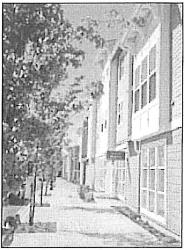
Five-foot wide clear and continuous
pedestrian zone
Figure 2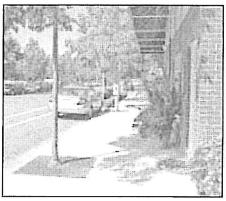
Street trees in grates
Figure 3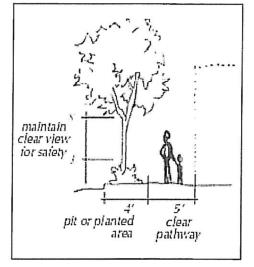
Figure 4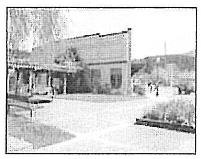
Plaza with seating and landscaping
Figure 5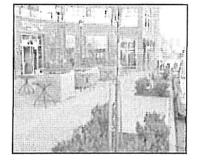
Half-circle of shared seating area within
a private development
Figure 6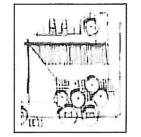
Accessible and visible
open space
Figure 7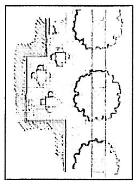
Varied setback from sidewalk
Figure 8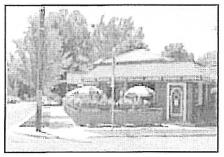
Setback at intersection for patron seating
Figure 9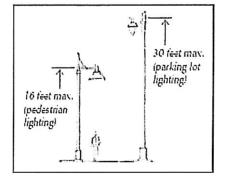
Light fixtures shall be shielded from the sky
Figure 10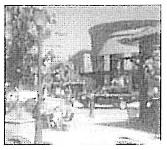
Pedestrian scale lighting
Figure 11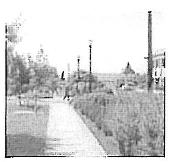
Site and parking lot lighting
Figure 12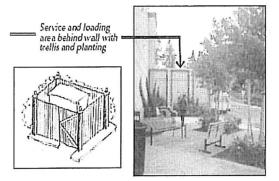
Screening of service area
Figure 13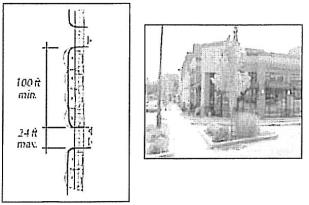
Pedestrian-friendly driveway
Figure 14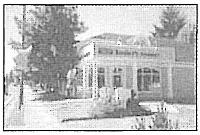
Drive-thru located at the rear of the building
Figure 15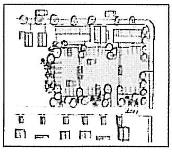
Rear parking screened from
adjacent residences
Figure 16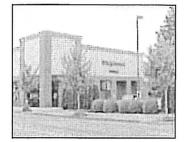
Parking located beside building
Figure 17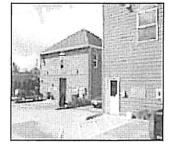
Rear parking
Figure 18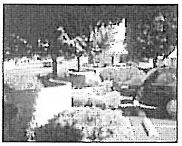
Low masonry wall with landscaping
Figure 19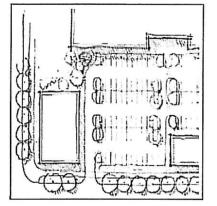
Trees at a 1:6 ratio in a consolidated
parking lot
Figure 20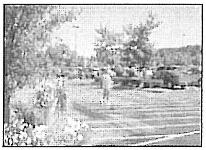
Trees contribute to shopping experiences
Figure 21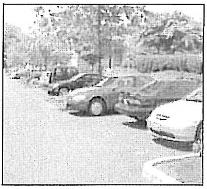
Landscaped “fingers” break up the
expanse of asphalt
Figure 22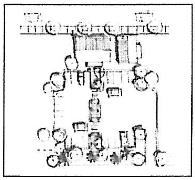
Five-foot wide pedestrian connection
through rear parking lot
Figure 23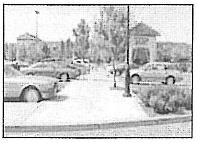
Connections provide safety and comfort
in large parking lots
Figure 24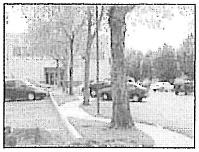
Connection combined with lighting
and trees
Figure 25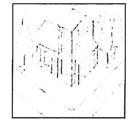
Storefronts and entrances should
open up towards the street
Figure 26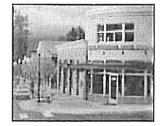
Buildings should enhance the
activity on the street
Figure 27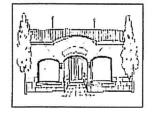
Recessed entrance
Figure 28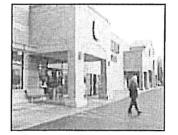
Large entrance and portico
Figure 29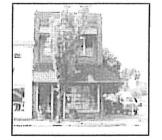
Weather protection along
front facade
Figure 30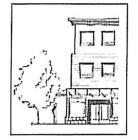
Distinct base, middle, and top
Figure 31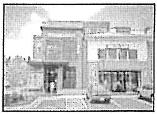
Figure 32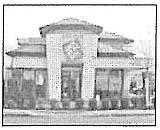
Figure 33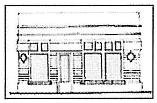
60 percent transparency
Figure 34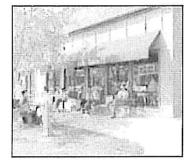
Large clear windows allow businesses
to thrive
Figure 35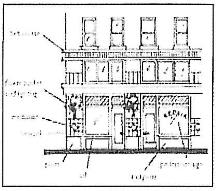
Figure 36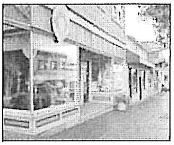
A variety of details at the ground
level attracts people and activity
Figure 37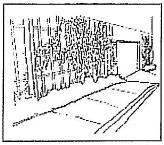
Trellis with vines next to a
garage entrance
Figure 38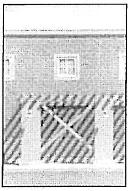
Architectural details and trellis
Figure 39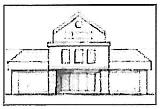
Pitched roof profile may provide
a more gentle transition to
nearby residential uses
Figure 40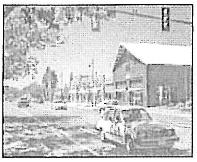
Distinct building presence on the street
Figure 41
Mechanical equipment screened
from pedestrians
Figure 42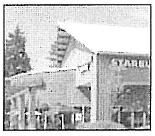
Figure 43
Figure 44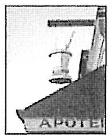
Figure 45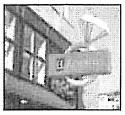
Figure 46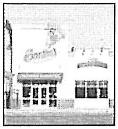
Figure 47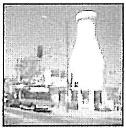
Figure 48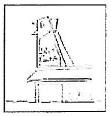
Figure 49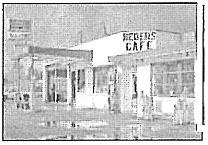
Figure 50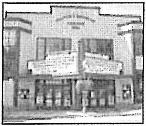
Figure 51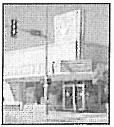
Figure 52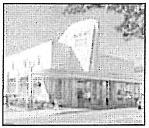
Figure 53
Figure 54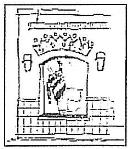
Figure 55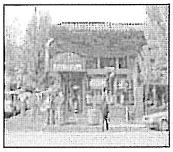
Figure 56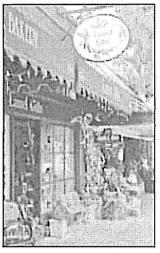
(Ord. 1821 § 1 (Att. A), 2016; Ord. 1591 § 1, 2007; Ord. 1503 § 1, 2005; Ord. 1398 § 1 (Exh. A), 2000)
18.32.050 Espresso stands – Drive-through.
The design requirements for drive-through espresso stands, where permitted by site plan review approval, are:
(1) On-site circulation shall be provided for the espresso stand that is designed to accommodate a free flow of vehicles that does not conflict with any other uses on the same site or traffic circulation on the site.
(2) Drive-through lanes shall be designed to accommodate awaiting vehicles so that vehicle stacking does not extend into public streets or other connecting travel lanes on the same site.
(3) Drive-through espresso stands are to meet the development standards of this code and site plan review criteria as found in Chapter 18.88 WMC and the commercial site design standards including signage as found in Chapter 18.60 WMC.
(4) Transportation studies in compliance with Chapter 18.90 WMC may be required of applicants for drive-through espresso stands regarding traffic loading, traffic circulation, and the impacts upon the transportation level of service on adjoining streets and roads. (Ord. 1886 § 1 (Exh. A), 2019; Ord. 1613 § 1 (Exh. A), 2008; Ord. 1422 § 1, 2001)
18.32.060 Commercial recreational facilities (enclosed and unenclosed) – Design standards.
The design requirements for commercial recreational facilities, where permitted by site plan review approval and/or conditional use, are:
(1) Building design and construction shall provide the following:
(a) Solid masonry or concrete on all walls.
(b) Sound baffling to assure noise levels not greater than 60 dBA at the outside of the building as determined by an acoustical engineer.
(c) Air ventilation and filtration system capable of removing dangerous levels of smoke and particulates, as determined by OSHA standards.
(2) Hearing protection devices shall be required for all persons exposed to noise levels above 75 dBA.
(3) Air emission permit shall be obtained from Southwest Washington Clean Air Agency prior to occupancy permit.
(4) Baffling to assure noise levels do not exceed 60 dBA in waiting areas and 50 dBA in an office area.
(5) A variance may be available to the noise level standard, depending on adjacent use and the use proposed.
(6) The hours of commercial recreational facilities shall be limited to 7:00 a.m. to 10:00 p.m. (Ord. 1451 § 1, 2003)


